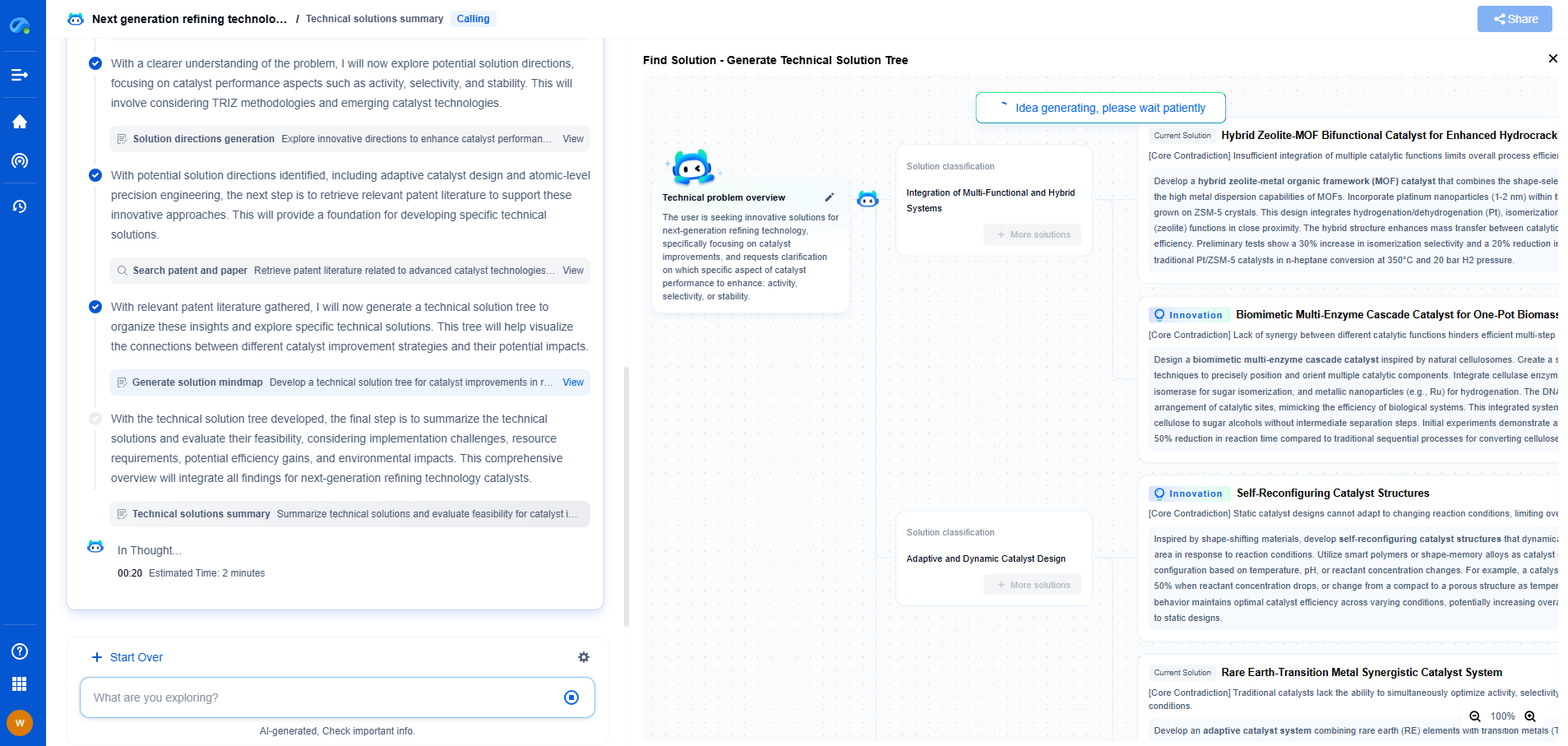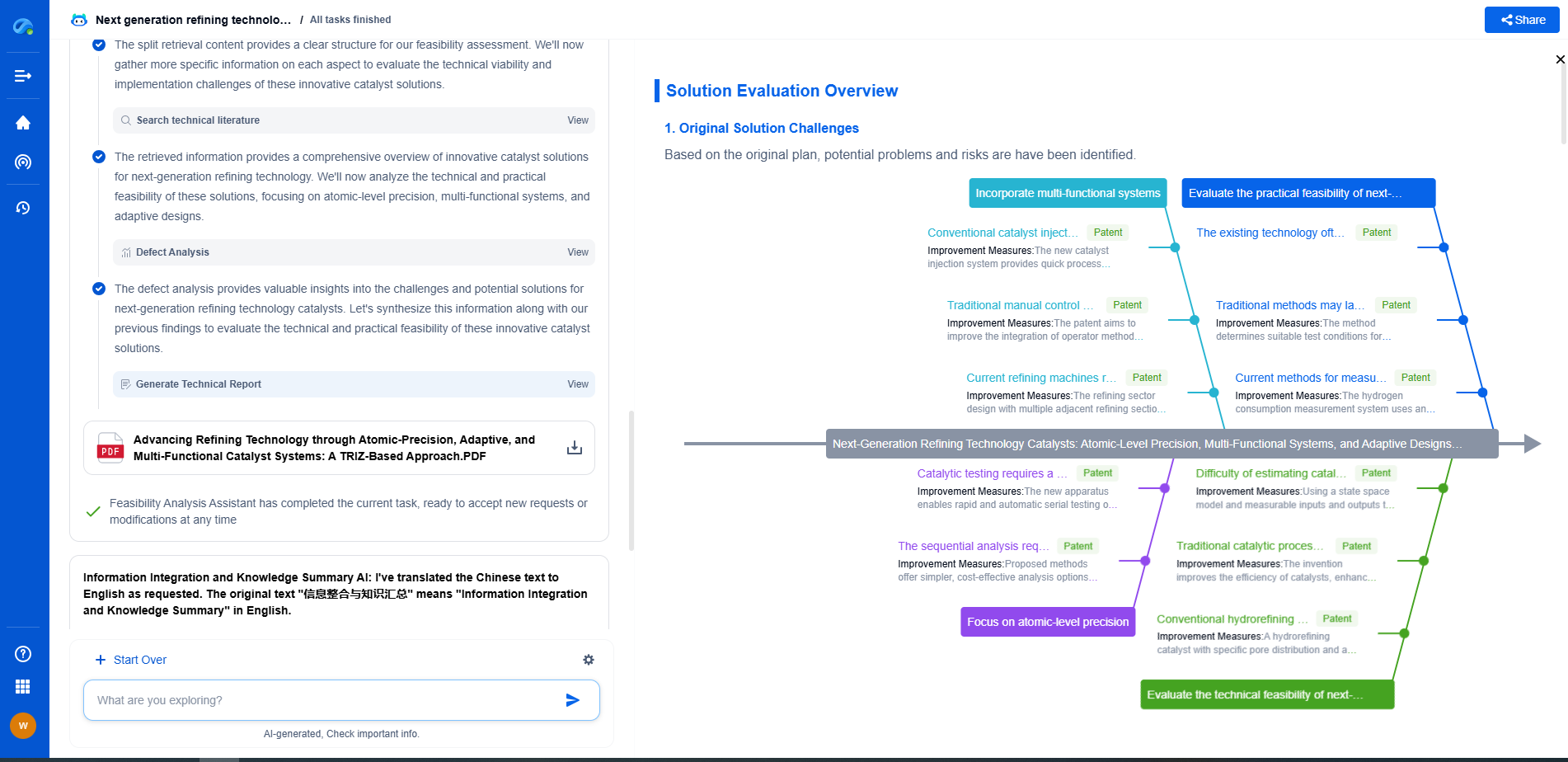How Are Wind Turbine Components Tested for Safety and Durability?
JUN 26, 2025 |
As the demand for renewable energy sources increases, wind turbines have become a cornerstone of sustainable electricity generation. However, ensuring their safety and durability is vital for both performance efficiency and public safety. Testing wind turbine components is a meticulous process that involves assessing various factors to ensure they withstand the rigors of their operational environment.
Material Testing and Analysis
The first step in testing wind turbine components involves material analysis. The materials used in manufacturing these components are tested for strength, fatigue, and corrosion resistance. Laboratories employ techniques such as tensile testing, which measures the force required to break a material, and fatigue testing, which assesses how materials perform under repetitive stress loads. Corrosion resistance is tested by exposing materials to simulated environmental conditions to see how they hold up over time. These tests are crucial for selecting materials that will ensure the longevity and reliability of wind turbine components.
Structural Testing of Components
A wind turbine comprises various components, including blades, towers, and nacelles, each of which must be structurally sound. Structural testing involves applying loads that simulate real-world operating conditions. For instance, blade testing might involve bending the blades with hydraulic actuators to mimic the forces experienced during high winds. This helps determine the blades' ability to withstand extreme stresses without failure. Similarly, tower structures are tested for stability and resilience to prevent catastrophic failures.
Aerodynamic and Load Testing
The aerodynamic performance of wind turbine blades is critical to their efficiency and durability. Computational fluid dynamics (CFD) simulations are used to model airflow over the blades and predict aerodynamic loads. These simulations provide insights into how blades will perform under different wind conditions. Additionally, wind tunnels can be used for physical testing by analyzing the blades' responses to controlled wind conditions. Load testing further examines how components handle operational loads, including both steady and fluctuating wind forces, to ensure they maintain functionality over time.
Environmental Testing Conditions
Wind turbines are exposed to a variety of environmental conditions that can affect their performance, such as temperature fluctuations, humidity, and UV radiation. Environmental testing replicates these conditions to evaluate how components respond. For example, climate chambers simulate temperature changes, while UV exposure tests assess the impact of sunlight on material degradation. This testing ensures that components not only function efficiently but also remain durable over extended periods in diverse climates.
Control System Testing
Modern wind turbines rely heavily on advanced control systems to optimize their performance and ensure safety. These systems are tested through software simulations and hardware-in-the-loop testing to verify their accuracy and reliability. Control systems must respond appropriately to changing wind conditions, power demands, and emergency situations. Rigorous testing of these systems ensures they can handle various scenarios and maintain the safe operation of the turbine.
Conclusion: The Importance of Comprehensive Testing
Testing wind turbine components for safety and durability is an ongoing and evolving process. As technology advances and environmental conditions change, so too do the methods and standards for testing these components. Comprehensive testing not only helps in the design of more efficient and reliable turbines but also plays a pivotal role in reducing maintenance costs and mitigating the risks of mechanical failures. As the wind energy sector continues to grow, ensuring the safety and durability of wind turbine components remains a critical focus for engineers and manufacturers worldwide.
Empower Your Wind Power Innovation with AI
In the fast-evolving landscape of wind turbine technology—where aerodynamic optimization, generator efficiency, and structural innovation are critical—staying ahead requires more than just expertise. It requires intelligent tools that accelerate R&D and protect your competitive edge.
Patsnap Eureka is your AI-powered research assistant, designed specifically for innovators like you working at the forefront of Wind Motors. Whether you're analyzing blade design trends, exploring novel gearbox architectures, or navigating complex global patent landscapes, Eureka streamlines the entire process with precision and speed.
👉 Experience how Patsnap Eureka can revolutionize your R&D and IP strategy. Request a demo today and power up your next breakthrough.
- R&D
- Intellectual Property
- Life Sciences
- Materials
- Tech Scout
- Unparalleled Data Quality
- Higher Quality Content
- 60% Fewer Hallucinations
Browse by: Latest US Patents, China's latest patents, Technical Efficacy Thesaurus, Application Domain, Technology Topic, Popular Technical Reports.
© 2025 PatSnap. All rights reserved.Legal|Privacy policy|Modern Slavery Act Transparency Statement|Sitemap|About US| Contact US: help@patsnap.com

